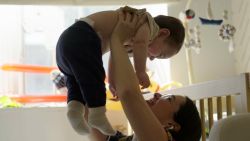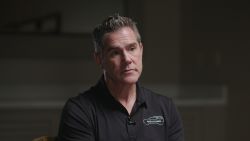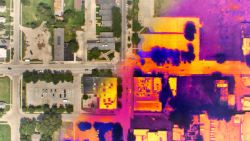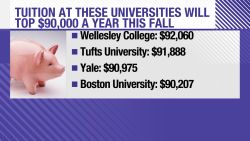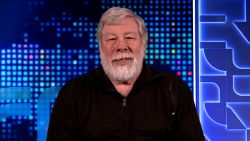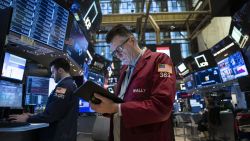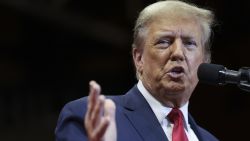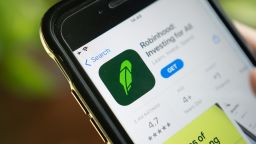The age of meme-stock trading has largely come to an end, and the online trading platform that fueled the surge is scrambling to find alternative sources of revenue.
Robinhood benefited greatly from meme investors piling into AMC, GameStop and other heavily shorted stocks last year. Ironically, Robinhood now thinks the key to its survival is letting investors lend their securities to short sellers — the very people the Reddit “apes” were trying to hurt.
In the first quarter of 2022, Robinhood’s monthly active users declined to 15.9 million, down from 17.7 million a year ago and 17.3 million in the previous quarter. The company’s average revenue per user came in at $53, down from $137 a year prior and $64 in the previous quarter.
Transactional revenue — the money made from investors purchasing stocks — made up about three-fourths of the company’s revenue this quarter but was down 48% from last year. In response, Robinhood has been offering an array of new products to diversify its income and rekindle user growth.
In late March, Robinhood announced expanded trading hours, and in early April the platform rolled out crypto wallets for its customers. This month, the company announced a new stock lending program, in which customers can lend shares of companies they own to other market participants while collecting a percentage of the fees.
The securities lending business is soaring: Global securities lenders generated $828 million in April 2022 revenue, that’s up 20% from April 2021, according to research firm DataLend. Robinhood hopes to grab a chunk of that away from larger institutions like BlackRock and State Street.
“We’re excited to break down yet another barrier and democratize a product that has been historically preserved for the wealthy with high barriers to entry,” wrote Steve Quirk, chief brokerage officer at Robinhood in a blog post about the new program. To qualify, Robinhood users must have $5,000 in total account value and $25,000 in reported income or trading experience.
Quirk described the program as a way for customers to “put their investments to work while keeping it simple,” and “add a potential source of passive recurring income to their portfolio.”
What could go wrong?
But some argue that there’s traditionally a high barrier for entry into stock lending for a reason.
Stock lending is an important element of short-selling, where investors borrow securities and then sell them immediately with the assumption that they’ll soon go down in price. The investor then hopes to buy the stock back at a specified date in the future, ideally for much less money, and return it to the original stock owner along with a small fee.
But stocks don’t always behave in the way they’re expected to, and if they rise in value, the borrower is liable for returning the security anyway. If a stock with a lot of short interest grows in price, short sellers exiting the investment often propel it even higher, causing a short squeeze. These moments have nearly toppled billion-dollar companies and big-time investors.
Stock lending is risky for short-sellers, but it’s risky for lenders, too. There’s no guarantee Robinhood customers who lend stocks will be repaid if a massive short-squeeze proves too large for the company to handle.
“There is a risk that Robinhood Securities could default on its obligations to you under the Stock Lending Program and fail to return the securities it has borrowed,” the brokerage warned. “If Robinhood Securities defaults and is unable to return loaned securities, you will not be able to trade such securities as usual.”
Stock lending is not insured by the Securities Investor Protection Corporation, so investors will have to rely on Robinhood if anything goes wrong. The company said that “participating stocks are backed by cash collateral at a third party bank for added protection,” but does not specify by whom nor the value of the cash collateral.
Lenders of securities also may lose the right to vote in shareholder meetings and the right to collect dividends. Borrowers typically send cash payments equal to the dividends to the lender, but those payments are taxed at a much higher rate.
Robinhood vs. the market
Robinhood launched in April 2013 and has been the beneficiary of a decade of markets traveling in a virtually straight, upward trajectory — until now. About 50% of its customers are first-time investors, the company has said, making it more susceptible to user drop-off during economic slowdowns.
Early in April, Goldman Sachs downgraded the company to a sell from neutral, citing headwinds as investors disengage due to falling markets. Robinhood had also benefited from the sugar rush of last year’s stimulus checks, which have since been spent. Customers with small balances are increasingly cashing out and spending their money on everyday expenses, Goldman said.
Last month, Robinhood CEO Vlad Tenev announced he would lay off 9% of the workforce as shares of the company’s stock hit a new low. It’s now down nearly 50% in 2022.
“We face a challenging macro environment,” Tenev said on a call with investors last month, “one most of our customers have never experienced in their lifetimes.”
Berkshire Hathaway vice chairman Charlie Munger slammed Robinhood during the investing giant’s annual meeting last month, calling the platform “disgusting” due to its “short-term gambling and big commissions and hidden kickbacks and so on.” Now Robinhood is “unraveling,” he said, adding, “God is getting just.”



